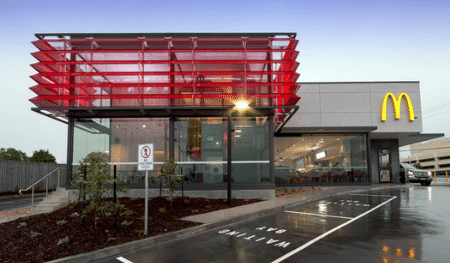The Drive Thru is becoming more and more critical for delivering an effective QSR experience, especially in Australia, a country so reliant on the motorcar. This article focusses on some of the critical factors that drive the success (or otherwise) of Drive Thru’s.
Consumer eating habits have been changing over time in Australia, with a clear move away from rigid meal times and more traditional meal occasions. This partly explains why some food businesses have struggled recently, with rigid business models and menus that only capture trade at traditional meal times.
Many brands operating large format dine in restaurants are now questioning the need to keep these properties in their current forms, with an ever increasing proportion of consumers now using Drive Thru’s (over dine in or take away) across a broader range of hours. The move toward favouring Drive Thru also has implications to the menu, with grab and go / eat on the run / while driving now a critical evaluation of a QSR’s menu appeal to a typical Drive Thru customer.
The increasing importance of Drive Thru has not been lost on many market leaders in the sector, with brands such as McDonald’s investing heavily on ever improving their Drive Thru experience.
The following are a few key fundamentals and emerging trends that make Drive Thru’s successful.
- Managing Drive Thru Speed of Service and Queuing – Dual Lane Drive Thru’s are becoming the norm as get the customer placing the order earlier, and give a perception of less of a queue (which can be a big disincentive). Duel Lane Drive Thru’s don’t actually speed up service, they just give a perception of less of a queue so we lose less customers in peak periods.
- Access to Drive Thru Signage (no surprises) – for impulse brands (or new brands where people have not experienced before), having ‘no surprises’ is also critical. This means easy access to drive thru, directional signage, and ideally, a visual sight line of how the drive thru works / entry points etc from the road outside. Psychologically, a proportion of customers will avoid things if they seem a little difficult or unknown at first, so make it easy and non threatening for new customers.
- In Drive Thru Promotion & Personalisation – There has been a lot of evolution recently in ‘in drive thru’ promotion, and in making the experience more personal. The use of apps or similar allows for a degree of personalisation in suggestive selling.
- Competition– Competition can be a friend or foe. Being located on the same road but away from a competitive cluster can be a strong negative, while clustering with complimentary QSR brands can be a positive.
- Understanding the customer’s motivation – understanding the type of customer is likely to assist greatly in offering the best facility set up. Mobile device data can be used, for instance, to profile the nature of vehicle trips past the door. Consumers on longer trips are more likely to dine in or order coffee, while shorter trips are likely to be locals that just want to take a meal home or to work.
Geotech have been working in the QSR/Food space for the best part of 25 years. Over that time there has been a significant increase in consumer’s willingness to use Drive Thru’s as their preferred choice of food ordering. The level of delivery picks ups is further changing the nature of restaurant visits (and Drive Thru usage).
If there is one key takeaway to remember from this article it would be this- the nature of the customer and the journey they are on in their car is critical to understanding opportunity and delivering the best facility for the likely demand. Geotech is highly experienced in this space, and would be happy to assist your planning.

